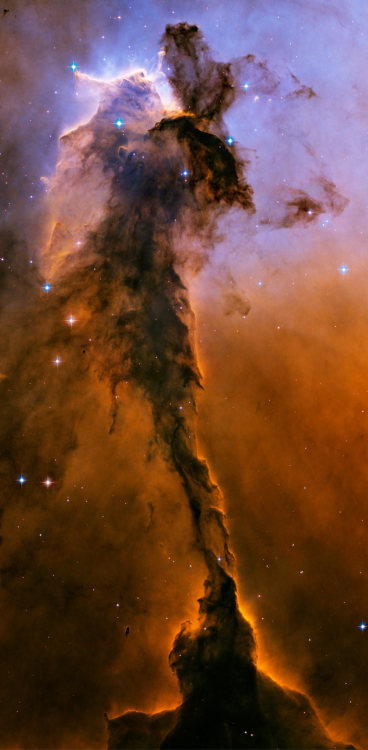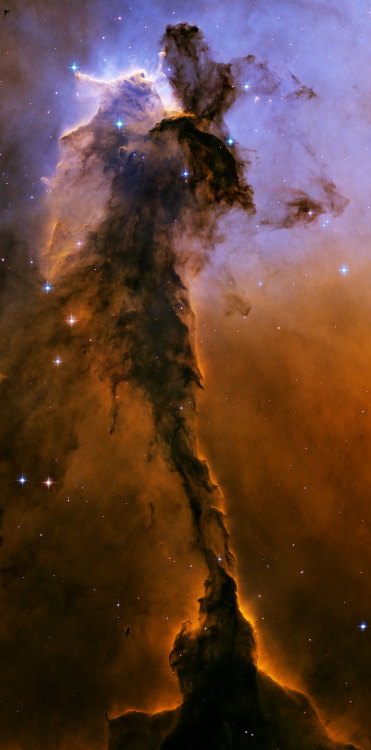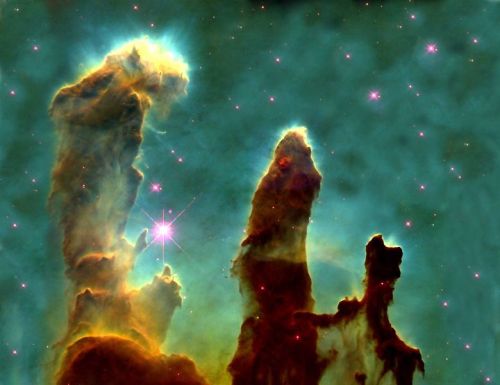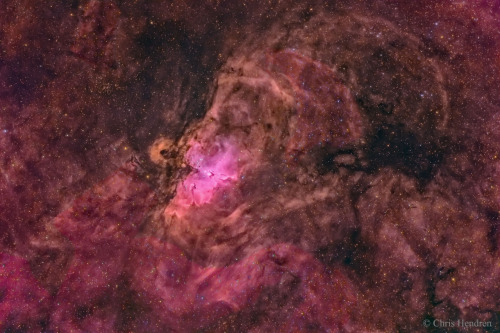#eagle nebula
The Fairy of the Eagle Nebula
The dust sculptures of the Eagle Nebula are evaporating. As powerful starlight whittles away these cool cosmic mountains, the statuesque pillars that remain might be imagined as mythical beasts. Pictured above is one of several striking dust pillars of the Eagle Nebula that might be described as a gigantic alien fairy. This fairy, however, is ten light years tall and spews radiation much hotter than common fire. The greater Eagle Nebula, M16, is actually a giant evaporating shell of gas and dust inside of which is a growing cavity filled with a spectacular stellar nursery currently forming an open cluster of stars. The above image in scientifically re-assigned colors was released in 2005 as part of the fifteenth anniversary celebration of the launch of the Hubble Space Telescope.
Credit:The Hubble Heritage Team, (STScI/AURA),ESA,NASA
Post link
TheEagle Nebula is a region of star formation, ranging at about 90 trillion kilometers long. To put to scale, that’s the equivalent of approximately 2,250,000,000 Earth’s. One of the large regions inside of the nebula is a star forming region referred to as “The Pillars of Creation” (seen above), which evidence suggests may have already been destroyed by a supernova that exploded some eight to nine thousand years ago. However, the light from this massive event will not reach Earth for another millennium.
Post link








